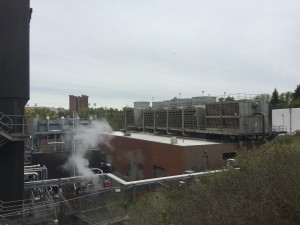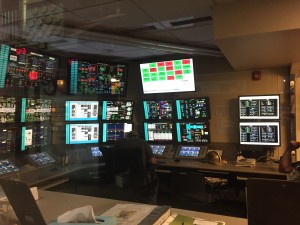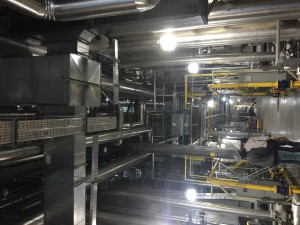As someone who tries to be environmentally friendly, touring Cornell’s Central Energy Plant and learning about the various energy production processes that occur there was particularly interesting. Our tour guide explained that the entire plant used to run on diesel but now uses natural gas for most heat and electricity production. I was very glad to hear that they also utilize hydro, solar, and some wind power instead of relying 100% on natural gas, which is not a renewable resource and produces some greenhouse gases during combustion. However, I think a lot more should be done to advance efforts to use a greater percentage of renewable energy sources at Cornell because the university has a lot of smart researchers and resources to help do so. Furthermore, their smart idea of keeping a small amount of diesel as a back up energy source on the off chance of a severe emergency was very reassuring to hear. I was also surprised to hear that they are able to power all of Cornell University campus (and only the campus) year-round with electricity, heat, and warm and cold water. Inside the plant itself, it visually seemed like thousands of large metal tubes all twisted and turned around and through each other to complete the huge energy-producing machine. When inside the main control room, it was obvious to see that a lot of effort and hard work must go in to keeping the plant running smoothly and efficiently. It made me marvel at how far technology, and specifically energy production, has advanced since the very first ideas of mass production. Going forward, it’ll be very interesting to see which directions Cornell will decide to take with both energy production and energy use. 


Energy Production for Cornell Campus
1
